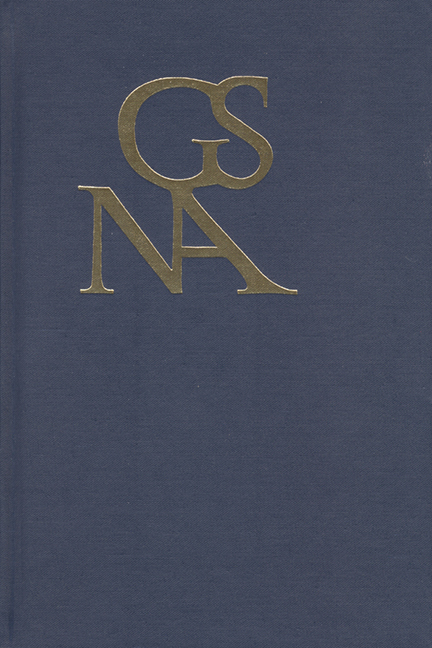Morphologie und gegenständliches Denken
from Reorientations around Goethe
Published online by Cambridge University Press: 26 June 2019
Summary
UMORIENTIERUNG SETZT VORAUS, dass man sich bereits einmal orientieren konnte. Und dies setzt wiederum voraus, dass man orientierungslos war. Der Notstand fehlender Orientierung war ein entscheidender Punkt in Kants berühmtem Aufsatz “Was heißt: Sich im Denken orientiren?” Denn in der Sphäre des Denkens setzt der uns sonst bei der Orientierung und folglich auch einer Umorientierung beispringende leibhafte Sinn für rechts und links, Aufgang und Untergang, aus. Im Raum können wir uns rasch orientieren, ja, wir können eigentlich gar nicht anders als uns zu orientieren. Dort aber, wo die Vernunft genötigt wird—und nach Kant gibt es sehr wohl bestimmte Notstände des Denkens—ohne Anschauung zu urteilen und also unter Verzicht auf leibhafte Orientierung, dort bedürfe es eines Vernunftglaubens, also eines Glaubens an die Macht und Regelhaftigkeit der Vernunft, die sozusagen ohne Rechts und Links, ohne Stab und Stecken, sich zu orientieren weiß. Auch Goethes Morphologie entspringt einem Orientierungsnotstand der Vernunft im Umgang mit einer Natur, deren regellos scheinende Vielfalt desorientierend wirkt. Nicht nur die in der “Metamorphose der Pflanzen” angeredete Liebste “verwirret … die tausendfältige Mischung / Dieses Blumengewühls über dem Garten umher,” sondern auch den Morphologen, der nur deshalb der Natur jenes geheime Gesetz ablauschen möchte, auf das er vertraut und an das er glaubt, wenn auch Goethe nicht immer so unbeirrbar wie der Philosoph aus Königsberg an die Regeln der Vernunft. Deshalb haben die Kantianer—mit einigen wichtigen Ausnahmen—Goethes Naturstudien auch für ein Analogon der dritten Kritik gehalten, aber ein seltsames, wie er selbst zugestand.
Wer sich in Goethes Morphologie zu orientieren sucht, dem wird es genauso sauer, wie es Goethe mit der Natur oft wurde. Denn die Morphologie liegt bekanntlich nicht in derselben Weise vor wie die Farbenlehre. Es gibt zwei Aufsätze aus den 1780er und 1790er Jahren, sodann die Hefte zur Morphologie, bekanntlich Goethes heterogenste Sammelpublikation, in die manche Aufzeichnung und Rezension eingegangen ist, aber längst nicht das gesamte Material, das in den Bänden 9 und 10 der Leopoldina-Ausgabe mit den Schriften zur Naturwissenschaft vollständig und verwirrend versammelt ist. Und schließlich sind da noch die spätesten Einlassungen wie der Akademiebericht oder der Aufsatz zur Spiraltendenz.
Mein eigener Versuch, mich in der Morphologie zu orientieren, nahm diese befremdliche Form der Formenlehre zu seinem Fluchtpunkt.
- Type
- Chapter
- Information
- Goethe Yearbook 26Publications of the Goethe Society of North America, pp. 3 - 16Publisher: Boydell & BrewerPrint publication year: 2019

